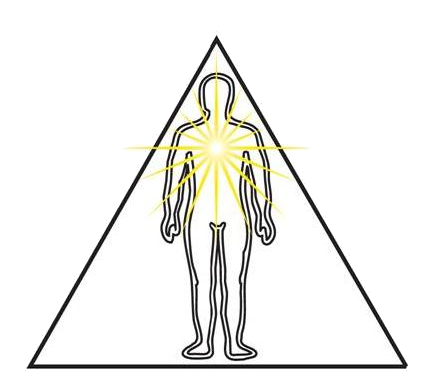Trigger Points and Pain

|
Chiropractic Care and Trigger Points
|
|
Trigger points associated with lower back and leg pain are commonly found the iliotibial band (near the upper thigh), as well as in muscles near the hip and buttocks, including the psoas, gluteus maximus, and piriformis. Trigger points associated with neck, upper back, and arm pain are commonly found muscles near the upper back and neck such as the the shawl portion of the trapezius muscle, the rhomboid muscles, and the levator scapulae.
These chronic, persistent, localized muscle spasms are caused by postural inefficiencies, biomechanical faults, and stress. Any or all of these factors may be involved. Stress may be ongoing, depending on the person's circumstances, but posture and biomechanics can definitely be addressed and improved with chiropractic care.
Your chiropractor will analyze and identify biomechanical issues, particularly those involving spinal misalignments. A chiropractor will design treatment specifically tailored for your individual needs and, if needed, will help educate you regarding good postural habits and exercises that will be beneficial for many years to come.
|
Trigger points are persistent, localized muscle spasms that can cause a great deal of pain.1,2,3 Trigger points alone may be responsible for many cases of neck pain, upper back pain, and lower back pain. This relationship is fairly common knowledge among physicians who treat pain, including chiropractors, rheumatologists, and physiatrists (doctors of physical medicine).
What is not generally known is that trigger points may also be implicated in radiating pain into the arm and hand or radiating pain into the leg and foot. In fact, radiating pain due to trigger points may be mistaken for pain caused by a herniated disc, in either the neck or lower back. Trigger point pain affecting the wrist and hand may even be misdiagnosed as carpal tunnel syndrome. A patient in whom a correct diagnosis of trigger point pain is missed may lose much precious time and other resources, as she fruitlessly "tries" one doctor after another and needlessly undergoes all sorts of complex and costly testing.
The key to correctly identifying the source and cause of upper or lower extremity radiating pain is to be able to accurately characterize its nature. Radiating pain caused by trigger points is diffuse - the pain broadly covers a region. This diffuse pain is described as "scleratogenous", meaning that it is pain referred from connective tissue such as muscle and tendon. Radiating pain caused by a compressed spinal nerve (ultimately caused by a herniated disc, for example) is described as "radicular" or "dermatomal". This pain is confined to a specific area - the area that is supplied by a specific spinal nerve. For example, pain involving the thumb and index finger could be caused by compression of the C6 spinal nerve. Pain involving the outside of the foot and the little toe could be caused by compression of the S1 spinal nerve.
Scleratogenous pain is not specific. A person might complain of pain across the "shawl" portion of the upper back and traveling into the upper arm, experienced "all over" the upper arm. Another person might be experiencing pain across the gluteal region, hip, and upper thigh. Both of these patterns of radiating pain are likely due to several trigger points, localized to the respective areas.
Of course, an accurate diagnosis is necessary to be able to develop an effective treatment strategy. The good news is that although trigger points necessarily represent a chronic muscular process, they may be treated with very good to excellent outcomes using conservative protocols. Chiropractic care is the optimal method for managing trigger point pain. Chiropractic care is a drug-free approach which directly addresses the biomechanical causes of these persistent trigger points and their associated patterns of radiating pain. Chiropractic care improves mobility and restores function, helping to reduce and resolve chronic pain.
1Alonso-Blanco C, et al: Multiple active myofascial trigger points reproduce the overall spontaneous pain pattern in women with fibromyalgia and are related to widespread mechanical hypersensitivity. Clin J Pain Feb 28 2011 (Epub ahead of print)
2Bron C, et al: Treatment of myofascial trigger points in patients with chronic shoulder pain: a randomized, controlled trial. BMC Med 9:8, 2011 (January 24th)
Dr. Huntoon has a single mission:
To support as many people as possible in their quest for health and enable them to improve and maintain their health to the highest level possible, while educating them about the benefits of Chiropractic, Natural Healthcare and Holistic Living, so they in turn can teach others to support us having a healthy community.
Your Choice
Health concerns are a major source of lost happiness and lost joy in all of our lives. Finding a solution that is agreeable and enables you to get back to your life is important. Please appreciate that you always have the more invasive surgery and prescription medication available to you as a last resort. What many Traditional Medical Doctors may not share is, many times, once you begin that journey into medication and/or surgery, it alters your original body from the one that you were born with. Unfortunately, at that time, more conservative and natural treatments may no longer be viable. I encourage you to consider that before making any decisions about treatment for your health. As always I am here to help.
Your Choice:
- Continue doing the same thing and nothing changes or it may get worse
OR
- Try something different and get a different result that makes you happier and healthier.
The Choice is Yours
Please call Dr. Huntoon at 845-561-BACK (2225) to discuss your options or click on our E-Visit to do it via e-mail.
Thank You for your consideration.


